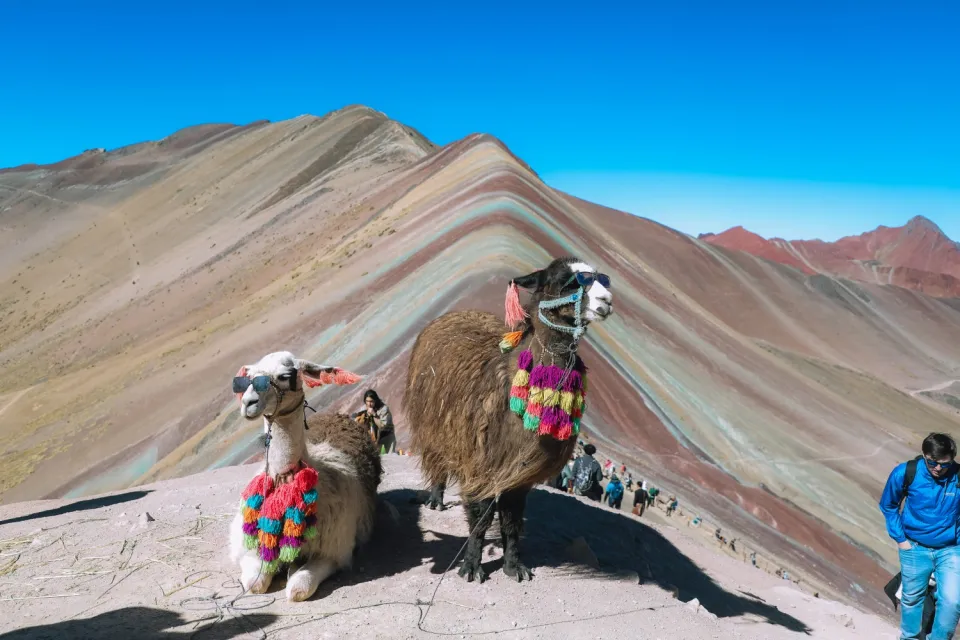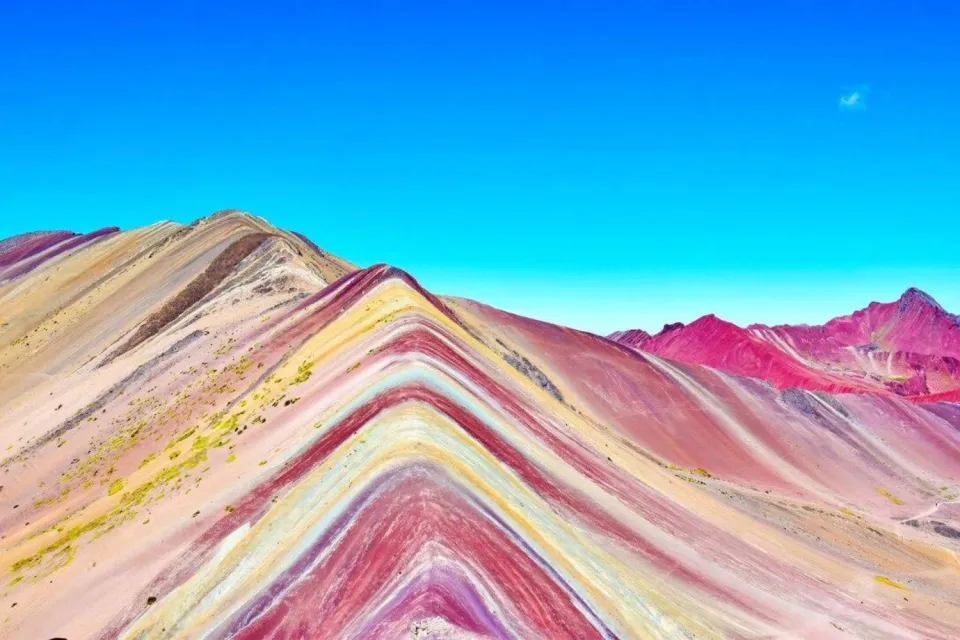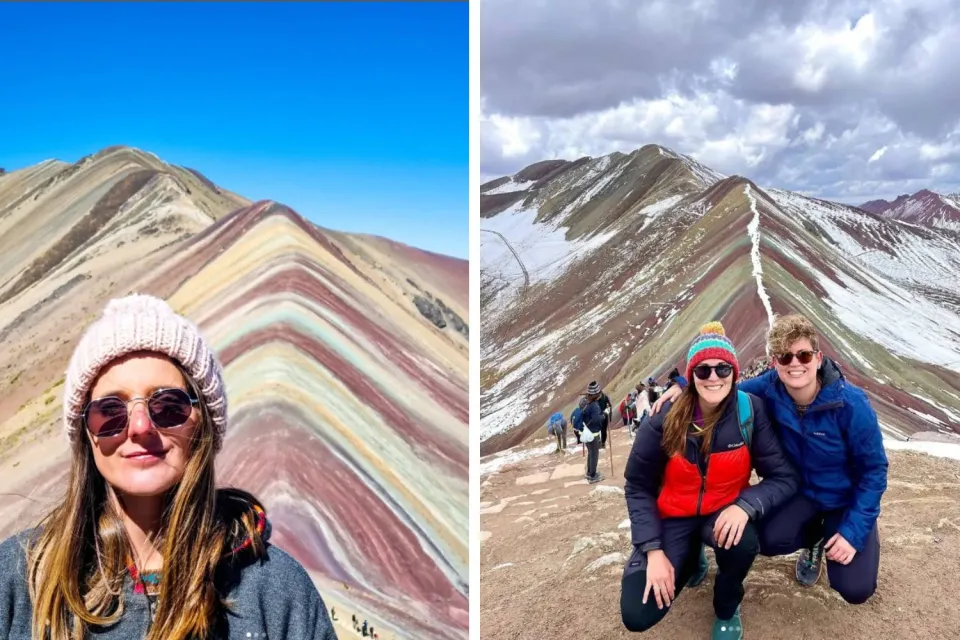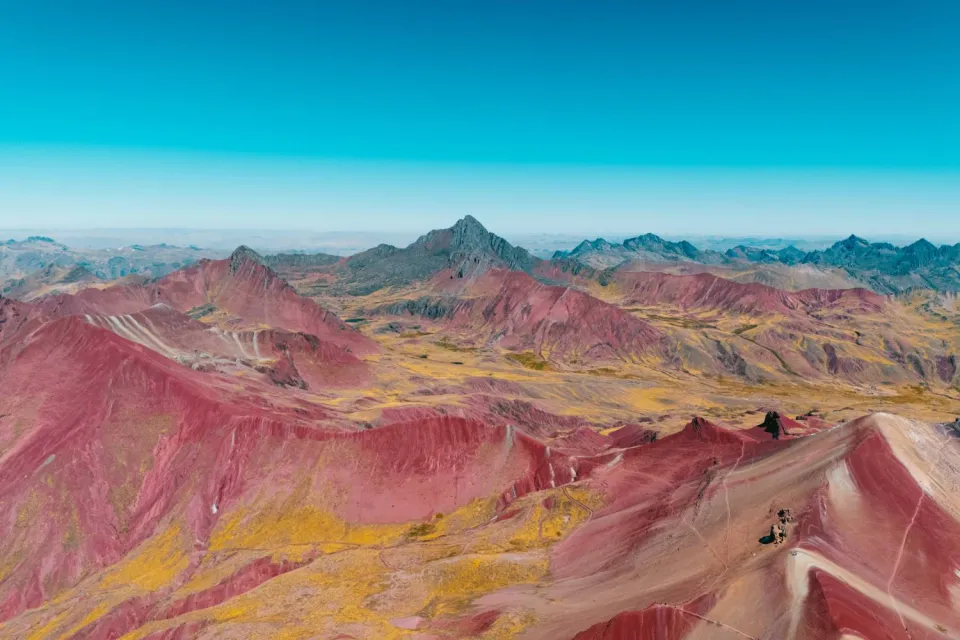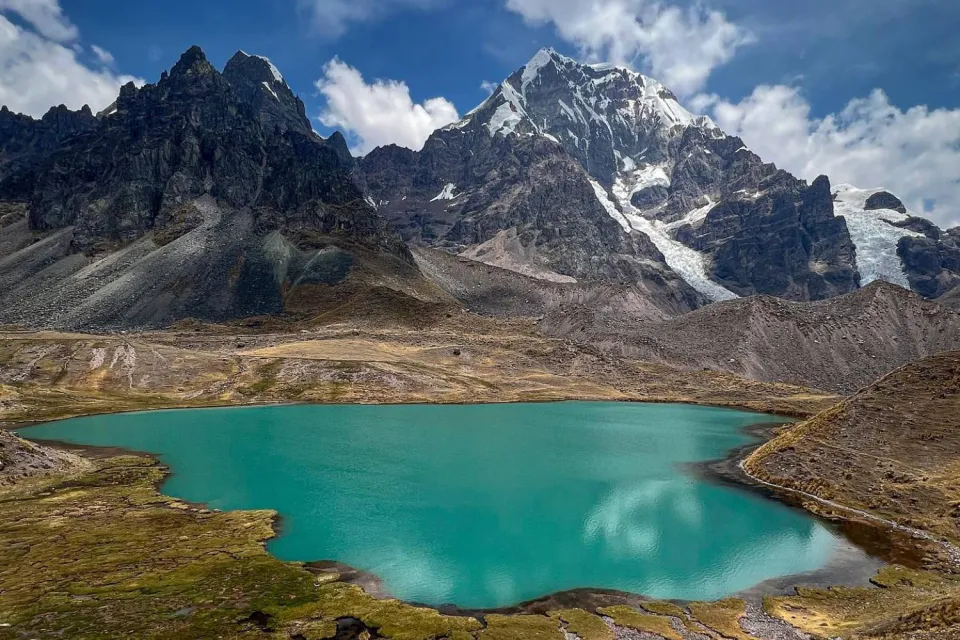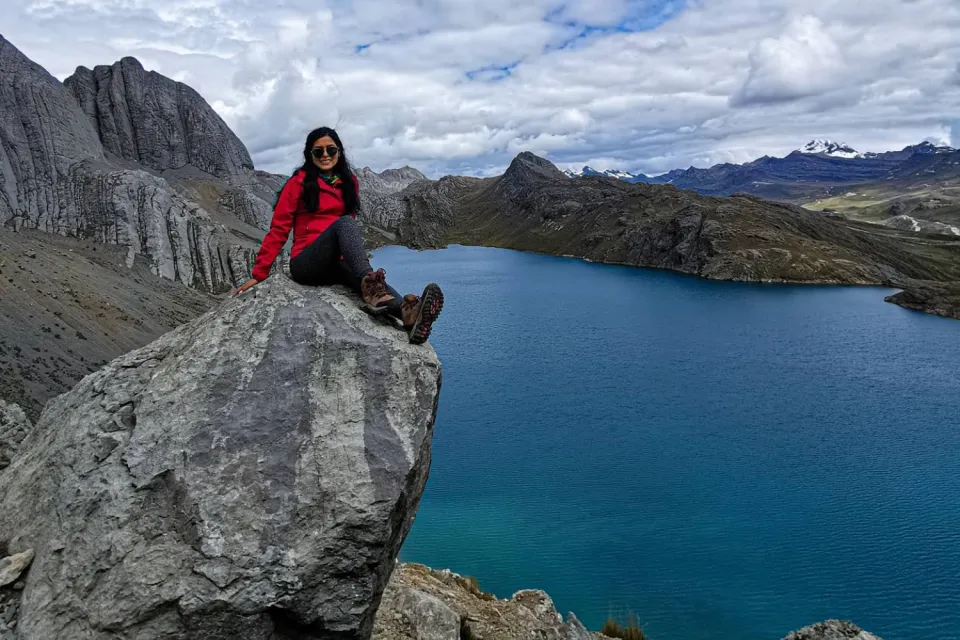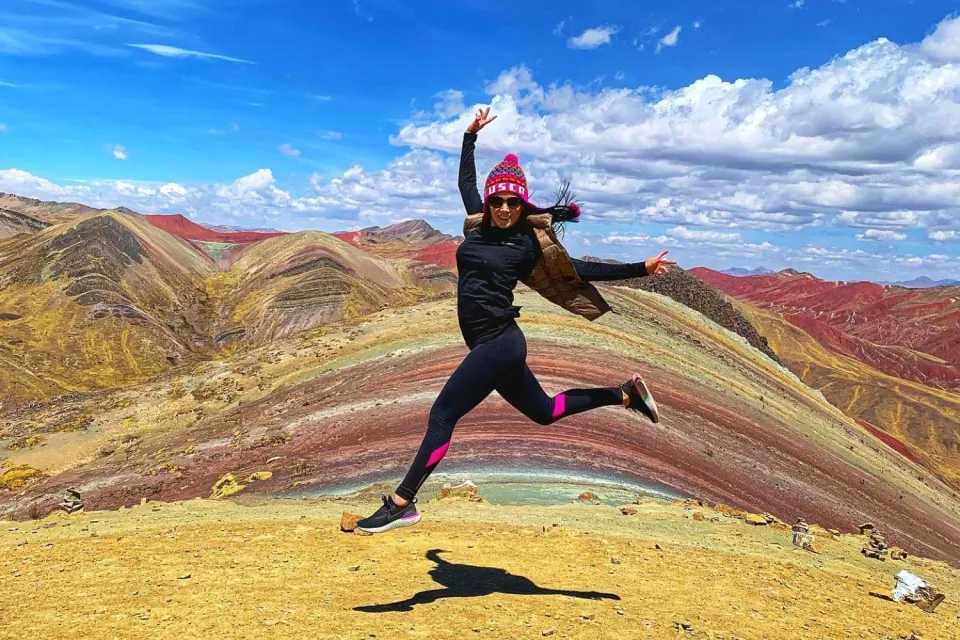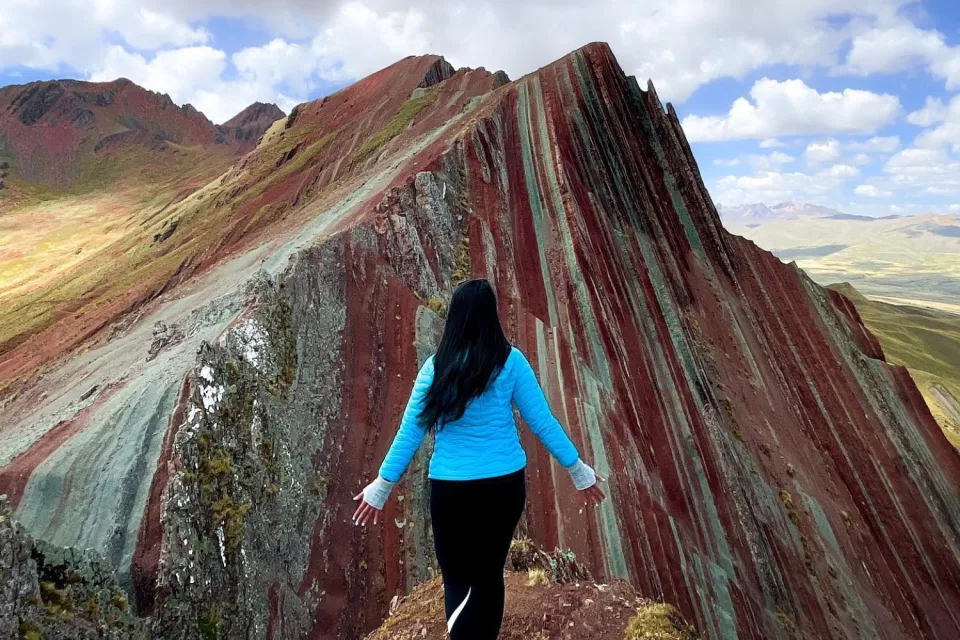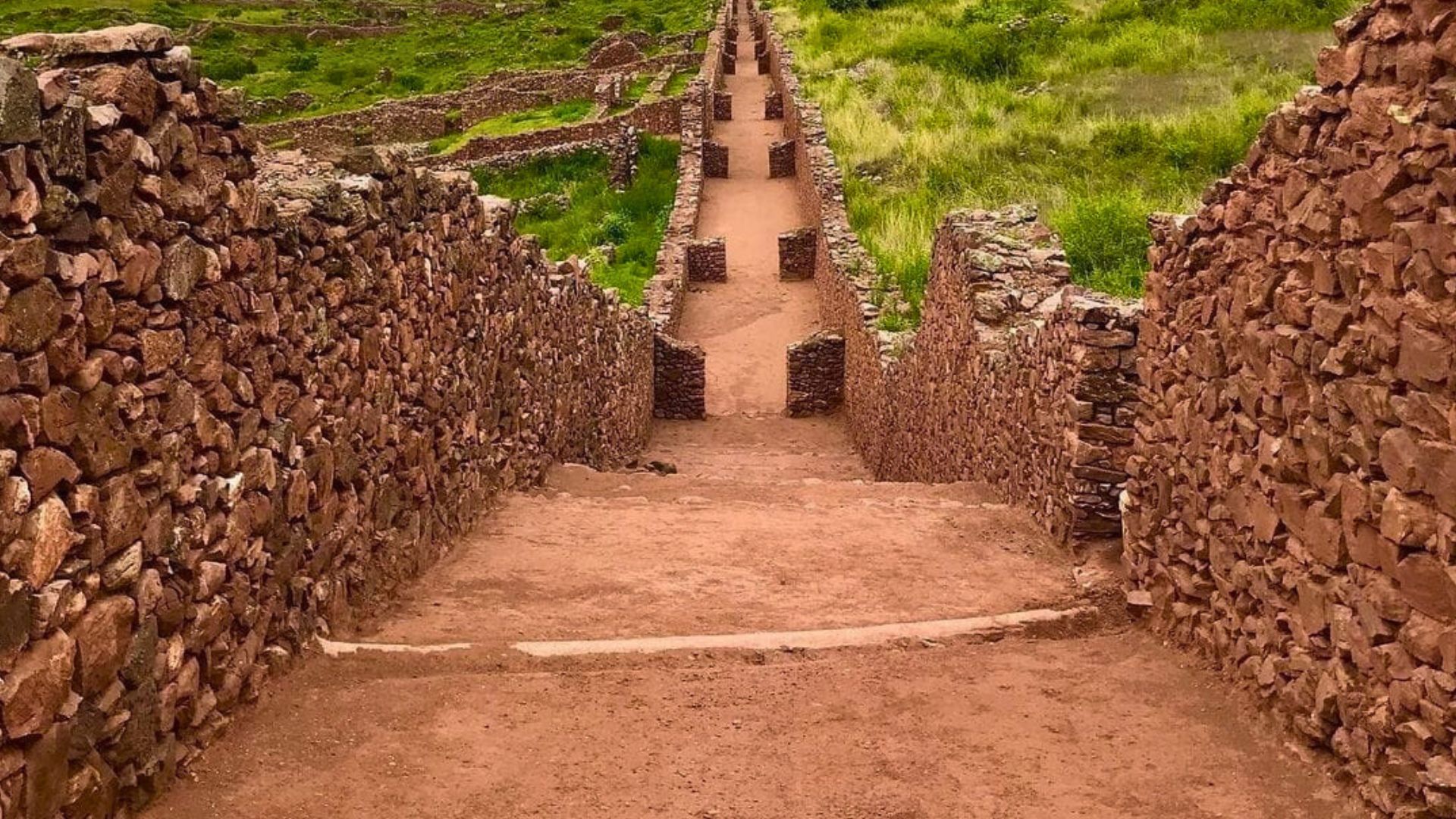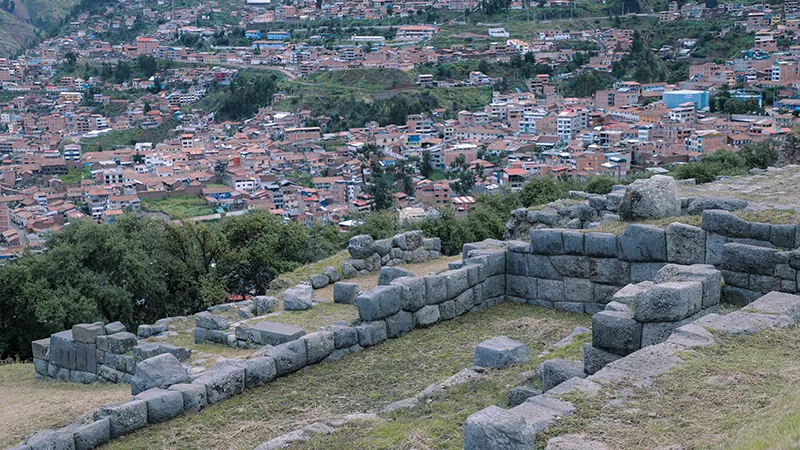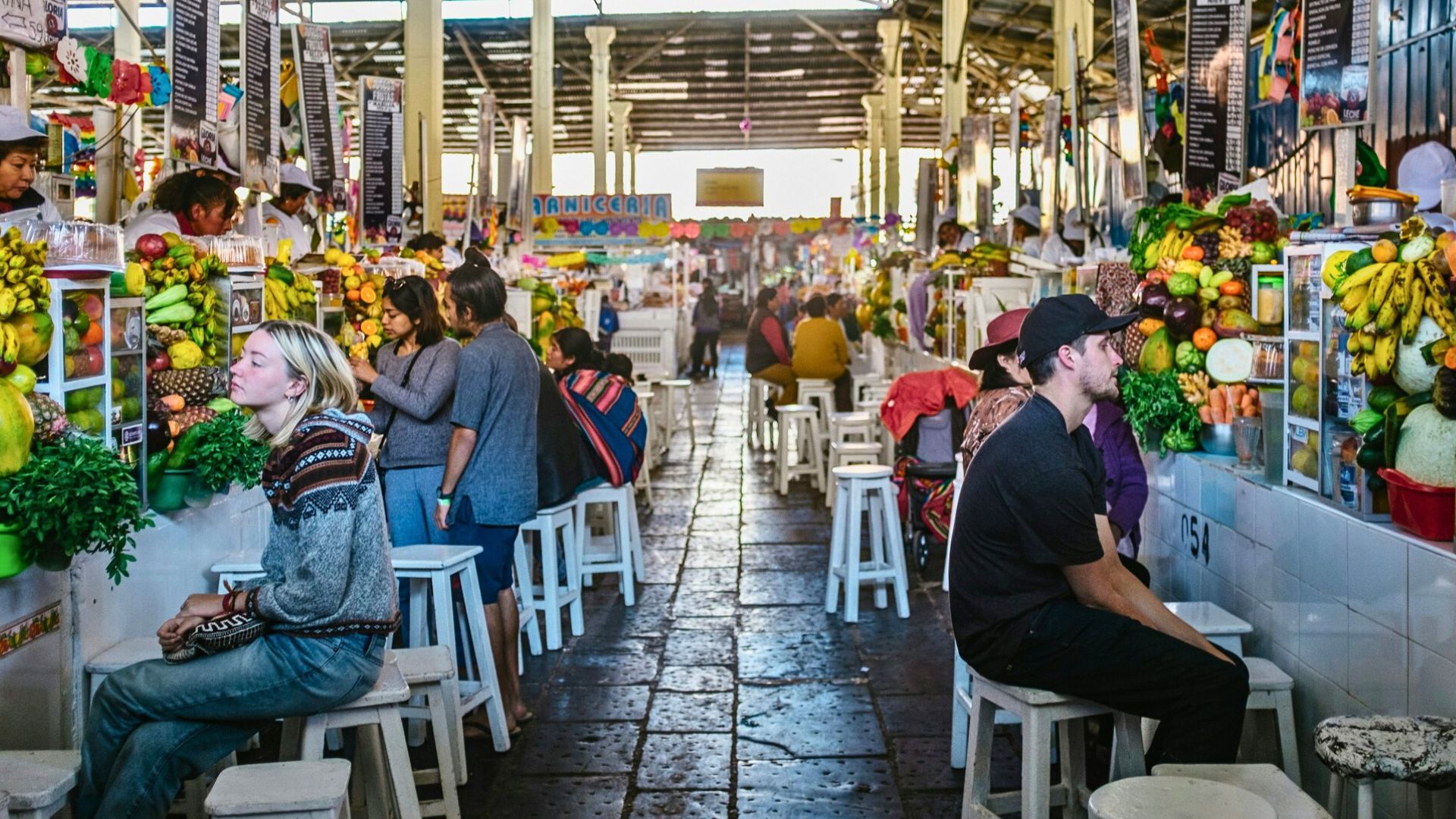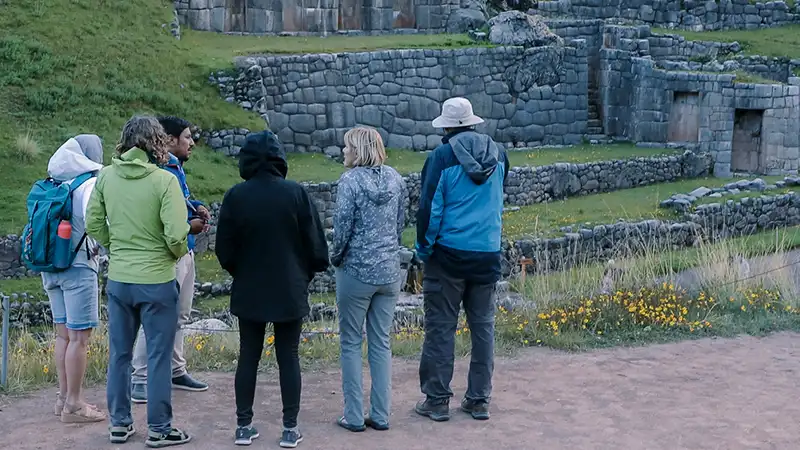In 2015, hardly anyone was talking about Vinicunca Rainbow mountain. Today, this mountain in the Peruvian Andes is a viral phenomenon on social networks and a must-see destination for adventurers.
But how did it go from being hidden under ice to being one of the most photographed landscapes in the world?
Discover the history, the origin of its colors and everything you need to know to visit it.
What is Vinicunca?
Vinicunca Rainbow Mountain, also known as the Mountain of Seven Colors, is a natural wonder and one of the most popular tourist destinations in Cusco, Peru.
Although its beauty has been around forever, its fame grew in recent years thanks to social media, where travelers shared stunning photographs during the Ausangate Trek.
Due to its unique visual impact and growing popularity, National Geographic included it in its list of the 100 places you must visit before you die, consolidating it as a must-see destination for adventure and nature lovers.
Origin and History of Vinicunca
Vinicunca is a natural formation resulting from geological processes that developed over more than 24 million years.
Its origin was due to the overlapping of the South American plate and the Nazca plate, which generated the elevation of the mountain.
Initially, Vinicunca did not present its characteristic colors, as it was covered by a thick layer of snow.
However, due to climate change and the process of deglaciation, the mountain was exposed to environmental factors such as erosion, rainfall, solar radiation and oxidation of minerals.
Each color stripe on the mountain is the result of the mineral composition present in this layer. These minerals reacted with oxygen and humidity, giving rise to the impressive palette of colors that characterizes it today.
The colors currently present in the colored mountain are:
| Stripe color | Mineral responsible |
| Pink | Red clay, fangolites and sand |
| White | Quartz sandstone |
| Purple or brown | Limonites and marls (rich in calcium carbonate) |
| Red | Iron and clays |
| Green | Phyllites and clays rich in ferromagnesian |
| Earthy brown | Rock with manganese |
| Mustard yellow | Sulfide-rich calcareous sandstones |
Discovery and Opening to Tourism
Until a few decades ago, Vinicunca Rainbow remained hidden under layers of snow and ice. It was only in 2015 when it began to become famous in social networks and became a must-see tourist destination.
This discovery has improved the quality of life of the peasant population of Chillihuani, as the income generated goes directly to the community.
In addition, many inhabitants have diversified their activities by offering services such as the sale of handicrafts, the preparation of typical dishes and horse rental, which enriches the tourists' experience.
Where is Vinicunca Rainbow mountain?
Vinicunca is located in the town of Chillihuani, in the district of Pitumarca in the Cusco region at an altitude of 5,200 meters above sea level.
How to get to Vinicunca Rainbow mountain from Cusco?
From Cusco to Vinicunca is only 120 km, to get there we have 3 main routes open:
Route by Cusipata (the most popular):
- Distance from Cusco: 2.30 hours by car to Phulawasipata + 1.5 hours walking.
- Advantage: Shortest road and accessibility.
Route through Pitumarca:
- Distance from Cusco: 3 hours by car to Kayrawiri + 3 hours trekking.
- Advantage: More diverse landscapes and less crowded.
Route through Lauramarca-Ausangate:
- Distance from Cusco: 3:30 hours by car to Tinki + 3 or 4 days of trekking.
- Advantage: Ideal for those looking for a more challenging trek with natural landscapes.
With the Vinincunca Rainbow mountain full day tour.
If you are looking for comfort, safety and a carefree experience, booking an organized tour is the best way to visit Vinicunca Mountain.
Ultimate trekking, offers you the Rainbow mountain full day tour to enjoy this natural paradise.
Why choose a tour with us?
- Total comfort: We take care of everything, from transportation in private vehicles to the management of entry permits.
- Expert guides: Accompanied by professionals who will provide you with information about the Andean culture and geology of Vinicunca.
- Guaranteed safety: Our team knows the route and is prepared for any situation.
- Time saving: Avoid worrying about organizing transfers or buying tickets; the tour includes everything.
- Cultural connection: Discover the history and secrets of the mountain with our guides.
- Customization: We offer tours tailored to your needs and budget.
Vinicunca weather and climate
The climate of this region is extreme, during the day it can reach 16° C and at night -5° C.
These temperatures vary according to the time of the year:
Dry season (April-October)
The best season to visit Vinicunca is during the dry season, as the days are mostly sunny and there is little rain.
This facilitates hiking and allows you to appreciate the colors of the mountain at its best.
Daytime temperatures range between 10°C and 16°C, while at night they can drop to -5°C.
Rainy season (November-March):
These months are the rainiest, which makes the trails slippery. However, the landscapes are greener and there are fewer tourists.
Temperatures are similar to those of the dry season, but with higher humidity and the presence of winds.
You have probably seen photos of the Seven Colored Mountain covered with snow. This phenomenon does not have an exact date, but it tends to occur more frequently in March.
Flora and Fauna
Despite the altitude, the region is home to species adapted to extreme conditions.
Flora:
- Ichu (Stipa Ichu): hardy Andean grass.
- Muña (Minthostachys setosa): Medicinal plant used to alleviate soroche.
- Kikuyo, Kunkuna, Miski pilli, Mutuy, kiswuar, Rocke and Paco-paco, plants that you will also be able to observe.
Fauna:
- Vicuñas: One of the most valuable South American camelids.
- Llamas and alpacas: Raised by the local villagers.
- Vizcachas: Small rodents similar to chinchillas.
- Andean goose or huallata
- Four-eyed marbled frog
What to see in Vinincunca Rainbow Mountain?
Besides enjoying the mountain scenery, you have two additional options:
The viewpoints
During the hike to the colorful mountain, there are 4 handcrafted viewpoints such as:
- The Hanaq wai viewpoint
- The viewpoint of Willaq Riity
- The Azul cocha viewpoint
- The Vinincunca viewpoint
Vicuña sighting area
If you hike to the Seven Colors Mountain along the Cusipata route, you will have the opportunity to pass through the community of Chillihuani, where you can observe vicuñas protected by the villagers.
Every year, the community performs a “chaco”, a traditional practice of sustainable shearing.
Tourist attractions near Vinicunca Rainbow mountain
Red Valley
The Red Valley is about an hour's walk from Vinuncunca, which is approximately 1.5 kilometers.
This natural destination is characterized by its mountains and red-colored soils, due to the high concentration of clay and iron-rich minerals.
During the rainy season, a phenomenon known as the Red River of Cusco occurs, where the river water acquires a reddish hue due to the dragging of mineral sediments.
Ausangate Mountain
The Nevado Ausangate is the mountain of Cusco, with an altitude of 6,384 meters above sea level.
It is located 20 kilometers in a straight line from the colored mountain and is considered sacred by the Andean communities.
From some points of the Ausangate Trek you can see Vinincunca and vice versa. The landscapes include glaciers, colorful lagoons, deep valleys and a diverse fauna with llamas, alpacas and vicuñas.
Blue Lagoon Cocha of Llaqto
Blue lagoon Cocha de Llaqto is a beautiful turquoise-colored body of water located near the Ausangate snow-capped peak.
Surrounded by mountains and Andean landscapes, this lagoon is formed by melting glaciers, creating an impressive natural environment.
It is a little known destination but ideal for those seeking a quiet experience in nature, away from the most crowded tourist routes.
The other colorful mountains
In Peru, there are three colorful mountains, all located in the Cusco region. Although Vinicunca is the best known.
Here are the other two alternatives that you can also visit:
Palcoyo
This is a group of three colorful mountains with similar tonalities to Vinicunca, but with a lower altitude of 4,900 meters above sea level.
Being less crowded, this option offers a quieter experience and is considered an excellent alternative to Vinicunca.
In addition, to get there, you will be able to cross the impressive Bosque de Piedras de Palccoyo, a unique geological formation that adds an additional attraction to the route.
Pallay Punchu
This recently discovered natural attraction presents impressive geological formations in the shape of a ridge, whose natural colors resemble the design of an Andean poncho.
Located in Layo, at a lower altitude than Vinicunca, this part of the Andes Mountains exhibits reddish, brown and yellow tones, creating a unique landscape.
In addition, a beautiful body of water is located near the area, which adds even more charm to the view.
Worldwide, there are similar formations to Vinicunca, such as Zhangye Danxia in China and the Cerro de los Siete Colores in Argentina.
What to bring?
- Bring your ID or passport, and if you are a student, don't forget your student card or International Student Identity Card (ISIC).
- Wear comfortable shoes, preferably trekking shoes.
- Wear waterproof clothing, gloves and a hat to protect you from the cold.
- Bring a rain poncho as a precaution.
- Use sun protection, such as sunscreen and sunglasses.
- Stay hydrated by carrying water bottles.
- Pack some snacks for the hike.
- Don't forget to take painkillers and medicine for soroche.
- Use rubber-tipped trekking poles for comfort.
- Carry cash for any extra expenses.
Do I have to acclimatize for this adventure?
Yes, because Vinicunca Mountain is located at 5,200 meters above sea level, oxygen is scarce, which can affect travelers who have not previously acclimatized in Cusco.
This can cause symptoms of altitude sickness, such as soroche, headaches, nausea or fatigue.
Depending on the individual, the effects can range from mild to severe, in which case medical attention or the use of an oxygen tank may be necessary.
To help you prevent it, here are some key tips:
- Prior acclimatization: Spend at least 2 days in Cusco before climbing.
- Hydration and coca leaf: Help to reduce the effects.
- Avoid heavy meals and alcohol the night before.
Frequently Asked Questions
What is the entrance fee to Vinicunca Rainbow mountain?
The entrance fee varies according to the route and nationality:
- Foreigners: S/ 25 - 7 USD.
- Peruvians: S/ 15 - 4 USD.
Who discovered the Vinikunka Rainbow Mountain?
The discovery of the Mountain of Seven Colors is attributed to the inhabitants of Chilca (Pitumarca), in particular to Mr. Juan Rojo Gonzales.
He was one of the first to recognize its importance when he was still a child, in 1985.
Are there hotels near Vinincunca?
No, there are currently no hotel options for overnight stays near this attraction. The closest accommodations are in the city of Cusco.
Are there restaurants near Vinincunca Rainbow mountain?
There are no restaurants near Vinicunca. The closest ones are in Cusipata, about 1 hour walk or 30 minutes by car.
However, on the way up the mountain, the villagers offer typical dishes such as fried trout and cuy al palo.
Can the route be done without a guide?
Yes, but it is recommended to hire a guided tour for safety and a better experience.
Are there restrooms along the way?
Yes, there are basic toilets at strategic points, but bring toilet paper and coins to pay for their use. Is it suitable for children or older adults?
Only if they are in good physical condition and acclimatized to the altitude.
What happens if I can't finish the hike?
You can rent a horse on the way (approximate cost: S/ 90 - S/ 100).
Vinicunca Rainbow mountain is a destination that every nature and adventure lover should visit at least once in a lifetime.
Its colors, its history and the energy of the Andes make it a magical place. Now that you know all about this wonder, you are ready to live the experience of a lifetime!

